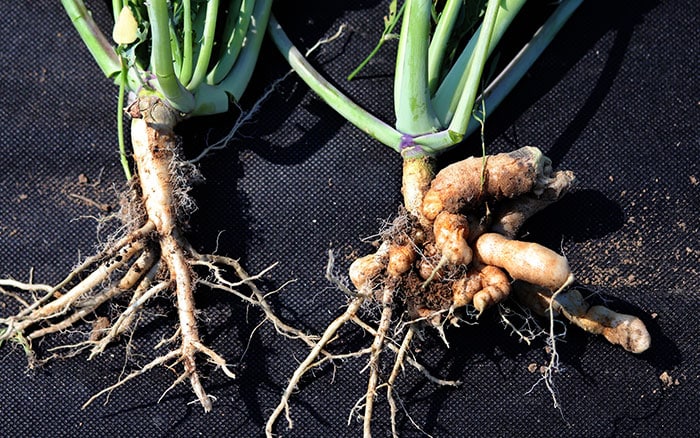Club root is a very common and widespread soil-borne fungal disease which affects brassicas such as Brussels sprouts and cabbages. It can be spread on garden tools and shoes and by any infected roots left in the soil after harvest.
What is club root?
Club root (Plasmodiophora brassicae) is a soil-borne micro-organism infecting the roots of brassica plants causing them to become swollen and distorted. It can also severely stunt the above-ground growth of the plant.
How to spot club root
Plants in the brassica family most commonly affected are Brussels sprouts, cabbages, cauliflowers, radishes, swedes and turnips.
The disease tends to be seen from mid-summer to late autumn. Plus, it can infect plants whenever the soil is warm and moist.
Above ground, look for stunted and severely reduced growth, leaves turning a purplish colour and wilting leaves in hot weather.
Additionally, below ground, the tell-tale signs are massively swollen and distorted roots.

How to control club root
This disease is generally worse on acidic, poorly-drained soil. Raising the soil pH by adding lime at the rate of 500g per sq m will reduce it. But this won’t be able to eliminate it.

Improving soil drainage and/or growing crops in raised beds may also help.
Plus, grow cultivars marketed to have some degree of resistance. Examples include Brussels sprouts ‘Cryptus F1’, cabbage ‘Kilaton F1’ and swede ‘Marian’.
Finally, ensure plants are bought from suppliers with a guarantee that they are club root-free.
If you need specialist advice, I recommend you get in touch with your local garden centre.

Leave A Comment